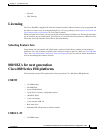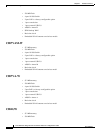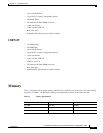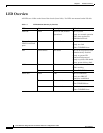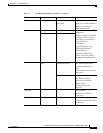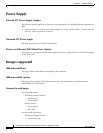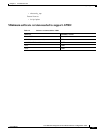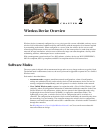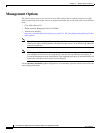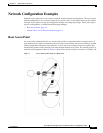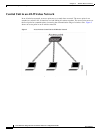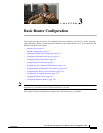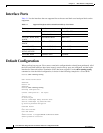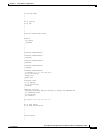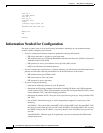
CHAPTER
2-1
Cisco 880 Series Integrated Services Router Software Configuration Guide
OL-22206-01
2
Wireless Device Overview
Wireless devices (commonly configured as access points) provide a secure, affordable, and easy-to-use
wireless LAN solution that combines mobility and flexibility with the enterprise-class features required
by networking professionals. When configured as a access point, the wireless device serves as the
connection point between wireless and wired networks or as the center point of a stand-alone wireless
network. In large installations, wireless users within radio range can roam throughout a facility while
maintaining seamless, uninterrupted access to the network.
With a management system based on Cisco IOS software, wireless devices are Wi-Fi CERTIFIED™,
802.11b-compliant, 802.11g-compliant, and 802.11n-compliant wireless LAN transceivers.
Software Modes
The access point is shipped with an autonomous image and a recovery image on the access point’s flash.
The default mode is autonomous; however, the access point can be upgraded to operate in Cisco Unified
Wireless mode.
Each mode is described below:
–
Autonomous mode—supports standalone network configurations, where all configuration
settings are maintained locally on the wireless device. Each autonomous device can load its
starting configuration independently, and still operate in a cohesive fashion on the network.
–
Cisco Unified Wireless mode—operates in conjunction with a Cisco Unified Wireless LAN
controller, where all configuration information is maintained within the controller. In the Cisco
Unified Wireless LAN architecture, wireless devices operate in the lightweight mode using
Leightweight Access Point Protocol (LWAPP), (as opposed to autonomous mode). The
lightweight access point, or wireless device, has no configuration until it associates to a
controller. The configuration on the wireless device can be modified by the controller only when
the networking is up and running. The controller manages the wireless device configuration,
firmware, and control transactions such as 802.1x authentication. All wireless traffic is tunneled
through the controller.
See Why Migrate to a Cisco Unified Wireless Network? on Cisco.com for more about this
network architecture design.



